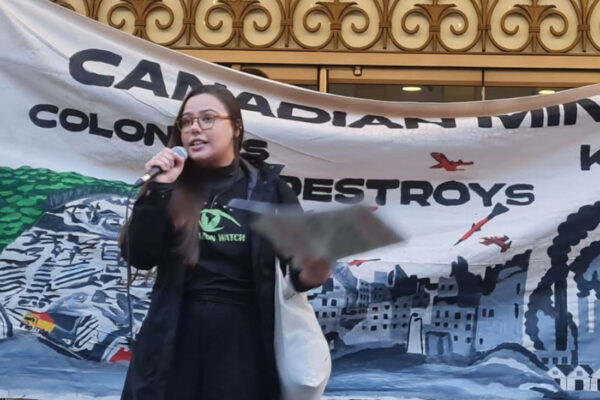
Who will benefit from Brazil’s future energy plans, as proposed by the current leadership in Brasilia? Households, including families on low incomes, or big business?
A household may be a relatively modest consumer of electricity, but each one needs access to a reliable and affordable electricity supply, with energy bills a significant item in family budgets. With more than 90% of Brazilian households already connected, Brazil is pushing for even greater electricity access, with active government support. But where does the country’s energy path go from here?
Judging from the medium-term forecast of the Ministry of Energy, and as I suggested in a recent discussion paper on hydropower, the answer is clear. Industrial use dominates its energy plan to 2030; the small print states that industry is to be the biggest customer category. That means more electricity generation capacity would be needed – a lot more – including supply to industries that make heavy energy demands, such as cement and ceramics, mining, aluminium, steel, and civil construction. Aluminium smelting, for example, is very energy intensive and aluminium production doubled from 2004-2013, according to the Brazilian Aluminium Association (ABAL) (as cited in a 2013 report). As for the services sector, the Ministry expects its share of national energy demand to stay pretty much the same (23% of total consumption in 2005 and still only 24.6% in 2030).
While Brazil’s policy makers, planners and engineers have expanded the country’s energy production, the track record on energy efficiency is poor. Government-sponsored programmes for energy conservation have received only modest funding and either operate at low capacity or have ceased altogether. Energy intensity – the energy used per unit of production – has increased since 1990 (albeit by a small margin).
The result is that Brazil is moving away from the target of improved energy intensity, as monitored by the global Sustainable Energy for All initiative. This neglect of demand management is, one sector specialist commented, ‘a serious aspect of energy policy requiring urgent change’. To put it simply, if nothing changes, Brazil is heading towards an increasingly energy producing and energy-guzzling future.
This can be seen in the auction for bids to build the proposed São Luiz hydropower plant on the Tapajós River in the Amazon, as recently announced by the Ministry . The auction has been withdrawn because of the outcry it caused. There was disbelief that the Ministry would try to organise this auction for December 2014, in the final days of the current administration. The proposed São Luiz do Tapajós powerplant would produce 8,000 megawatts (MW) in line with the Ministry of Energy’s tendency to ‘do huge‘ rather than ‘do big’.
This reflects a mindset that dates back to the era of military governments. The public company operating the hydropower plant at Itaipú on the Brazil/Paraguay border, built in the pre-democratic era, boasts of its ‘gigantic’ size (14,000 MW of installed generating capacity). The Belo Monte hydropower project, currently under construction on the Xingu River in the Brazilian Amazon, will have an installed capacity of over 11,000 MW when completed, making it the third largest hydropower plant in the world, after Three Gorges in China (18, 200 MW) and Itaipú. As proposed, São Luiz do Tapajós, would become the fourth largest.
Huge dams, then, to power huge – outsized – energy appetites.
Where do Brazilian households fit in this ‘gigantism’? The current model of big and very big will not meet the demands of the remaining unconnected Brazilian households, which still depend on candles and lamps for lighting, or pay for diesel or oil-powered generators. They are typically in remote rural locations such as the Amazon region. Their small, dispersed communities, separated by rivers and difficult terrain, will be best served by ‘off-grid’ and ‘mini-grid’ solutions, given the practical limits to grid expansion, as well as its financial cost.
Brazil’s state-owned national development bank, BNDES, has proved its effectiveness as an implicit state guarantor of private investment in energy development. Can it not channel more support to a new generation of medium and small projects applying biomass, wind, solar energy – and hydropower – technologies?
Meanwhile, for the urban populations concentrated near the coast and in Southeast, Northeast and South Brazil, the approval of very large hydropower plants, such Belo Monte, and the two large plants on the Madeira River in the Amazon – Jirau and Santo Antônio – has not succeeded in responding to the risks of power cuts. These ‘run-of-river‘ schemes have smaller reservoirs that store less water and less electricity generation capacity and are vulnerable to low river flows. The low water levels that contributed to the rationing of power in 2001-2002 and the droughts in the Amazon in 2005, and more recently in São Paulo state, could signal increased variability in the future as a result of climate change. Hydropower – in other words – cannot provide Brazil with a safe and reliable electricity supply without further power plants, using different types of energy, also being available.
The decisions to build these power plants have been made behind closed doors by a narrow government circle. The national water regulator (ANA) is side-lined and the National Council on Energy Policy (CNPE) is, as the energy specialist quoted earlier has commented, ‘almost completely ignored’. The Government is imposing its energy policy in the pursuit of ‘business-as usual’, with the support of major construction and industry interests – a politically-protected nexus behind the current energy policy direction.
There is an urgent need to, as another Brazilian energy expert has said, ‘open up and manage a debate on the country’s energy path’, including the future contribution of hydropower. A more open and transparent decision-making process with robust, independent review would increase the political legitimacy of decisions. In Brazil’s evolving social and political climate, where Brazilians are increasingly questioning the actions of their leaders, the Ministry’s plans for hydropower, especially in the Amazon, will have to win a broad social and political ‘licence’. The key to that is clarity – and equity – on precisely whom energy policy is designed to serve.













